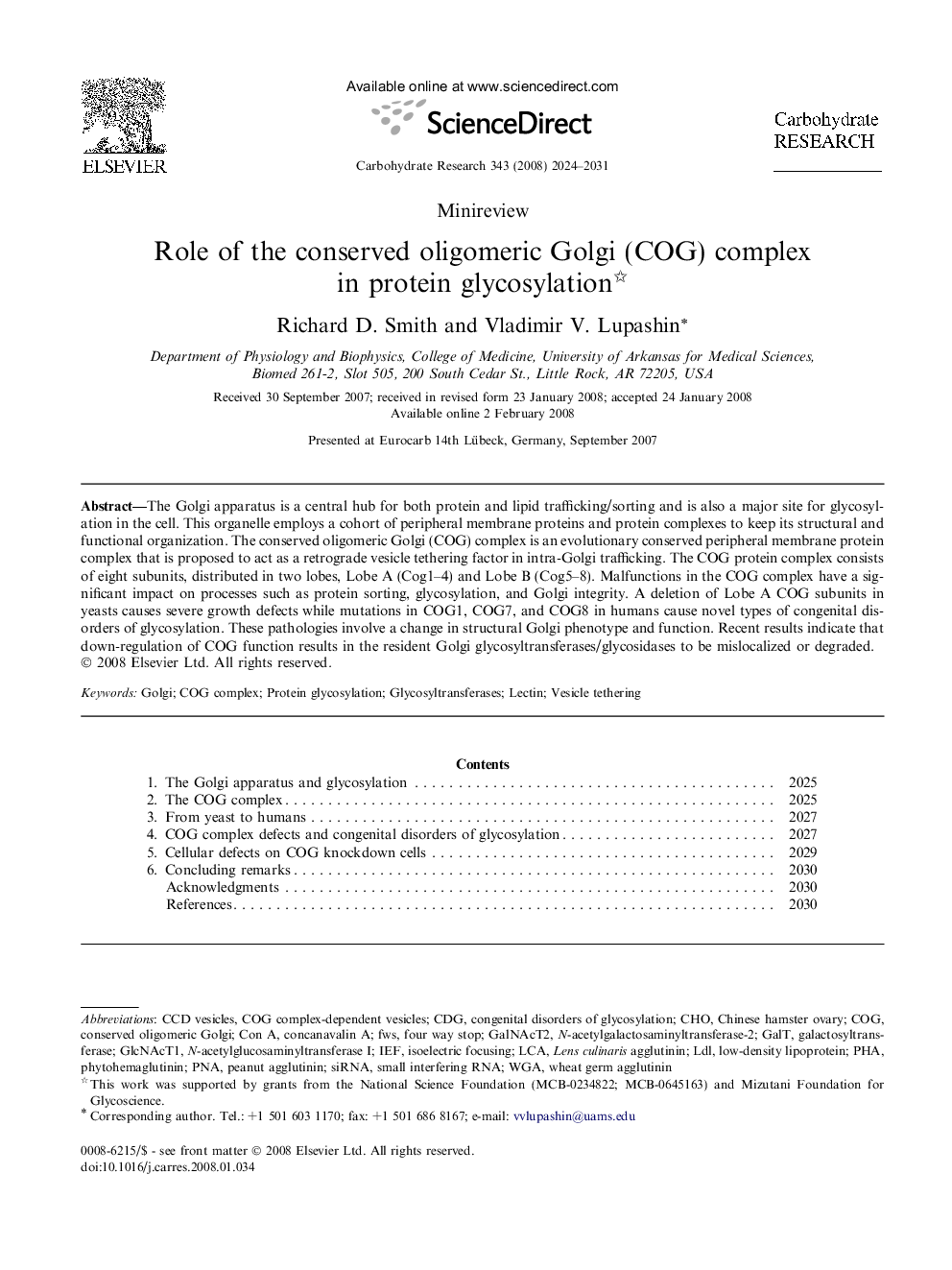| Article ID | Journal | Published Year | Pages | File Type |
|---|---|---|---|---|
| 1388506 | Carbohydrate Research | 2008 | 8 Pages |
The Golgi apparatus is a central hub for both protein and lipid trafficking/sorting and is also a major site for glycosylation in the cell. This organelle employs a cohort of peripheral membrane proteins and protein complexes to keep its structural and functional organization. The conserved oligomeric Golgi (COG) complex is an evolutionary conserved peripheral membrane protein complex that is proposed to act as a retrograde vesicle tethering factor in intra-Golgi trafficking. The COG protein complex consists of eight subunits, distributed in two lobes, Lobe A (Cog1–4) and Lobe B (Cog5–8). Malfunctions in the COG complex have a significant impact on processes such as protein sorting, glycosylation, and Golgi integrity. A deletion of Lobe A COG subunits in yeasts causes severe growth defects while mutations in COG1, COG7, and COG8 in humans cause novel types of congenital disorders of glycosylation. These pathologies involve a change in structural Golgi phenotype and function. Recent results indicate that down-regulation of COG function results in the resident Golgi glycosyltransferases/glycosidases to be mislocalized or degraded.
Graphical abstractFigure optionsDownload full-size imageDownload as PowerPoint slide
